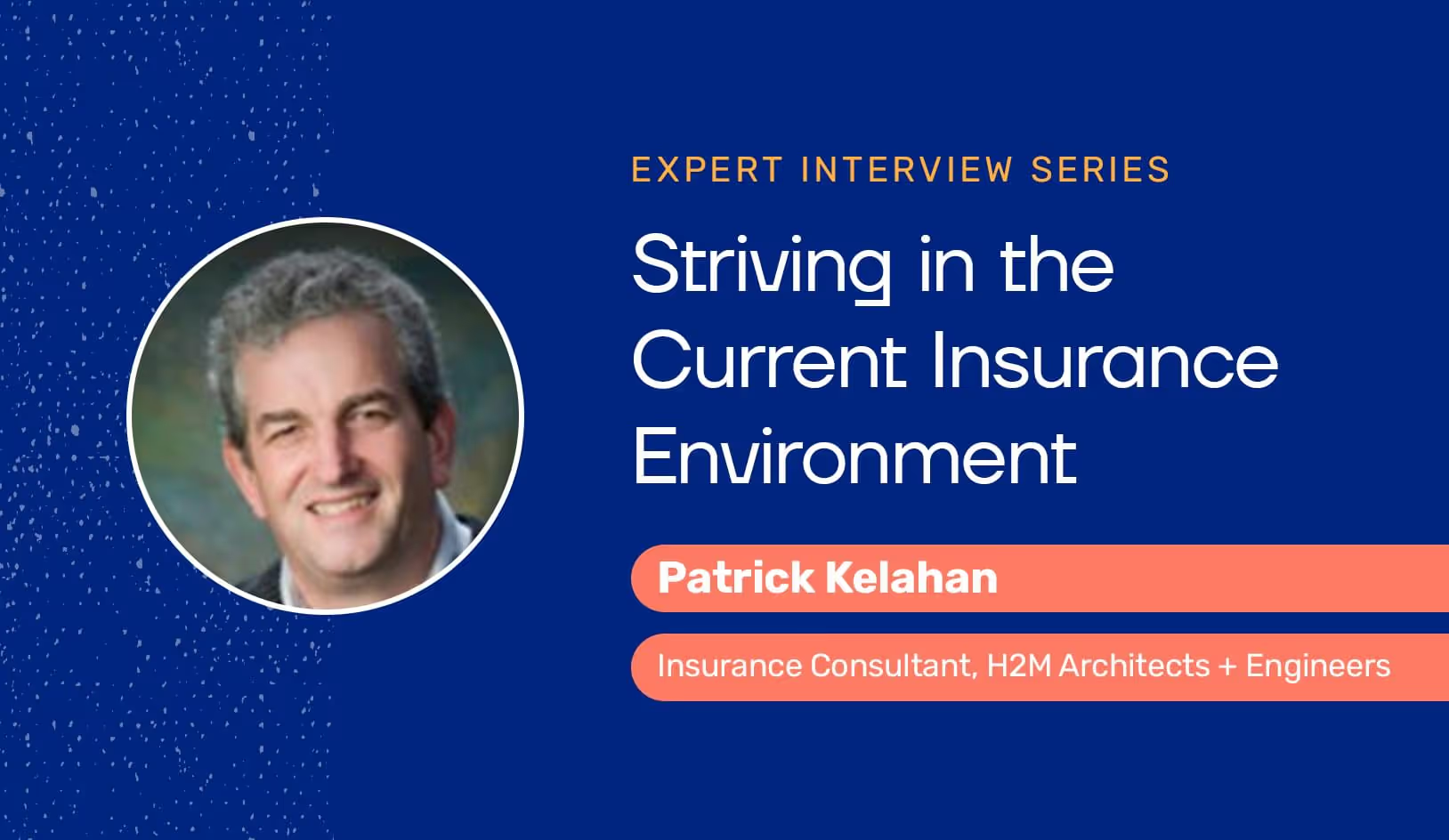Patrick Kelahan is a CX, engineering & insurance consultant with H2M architects + engineers, working with Insurers, Attorneys, and Owners. He also serves the insurance and fintech world as the ‘Insurance Elephant’.
We had the opportunity to interview Patrick Kelahan, an insurance and claims consultant, focusing on InsurTech, innovation, integration of innovation and customers, and claim staff training, to gain insights on the current insurance environment. Kelahan shares some challenges and initiatives to undertake during the current crisis.
Q&A with Patrick Kelahan, Insurance Consultant
Q: What is your biggest challenge right now and how are you addressing it?
The biggest challenge is three parts – 1) understanding how service to customers (internal and external) is to be maintained, 2) understanding what ‘service’ means to customers now that their customers’ needs may have changed in scope or delivery, and 3) ensuring work systems do not become an impediment in addressing 1) and 2).
We have reached out to customers to ask how their needs have changed, and what we can do to help mitigate any change effects. You can’t know unless you ask.
Work From Home protocols already existed in the firm’s continuation plan so the challenge of broadening their use to include many others included stress testing our systems.
And virtual work habits were put into place, including team daily status calls (status of team members, not so much status of work), outreach for specific known challenges, so staffers don’t feel overwhelmed, and daily video updates from the CEO to all to keep the org uniformly notified of situations.
Q: What’s the most effective initiative you have undertaken since the current crisis started, and how is it helping your business?
Working to minimize process and system disruptions. Migration to WFH status should not place process barriers in front of staff; being able to seamlessly shift to WFH makes the change invisible to clients, reassures staff. Keep the focus on supporting each other and customers, don’t let the changes become the project.
Q: In your opinion, where should insurers concentrate their efforts when it comes to digital transformation in order to not just survive, but thrive in the current environment?
Digital transformation should focus on digital’s highest and best value- efficiency in process, analysis, and orchestration of the use of multiple digital tools. Human staff remainsthe key in providing analog solutions; digital transformation should facilitate analog service.
Insurers that conquer transformation of unstructured data beyond conversion to OCR or the like will benefit from more comprehensive and prompt data analysis, fraud detection, and earlier identification of customers’ service needs.
Firms that are able to apply ala carte tech transformation rather than ordering a tech ‘buffet’ will not only be able to select the best use vendor for each transformation aspect but will be able to more easily adapt to change without having to reconfigure an entire PAS or CAS. A ‘one size fits all’ solution is the new legacy tech.
Q: In your opinion, what will be the long-lasting effects on the insurance industry when things get back to normal, and how should insurers prepare for what’s to come?
How insurance shares risk will be a lasting effect- the coverage gaps have been exposed (consider business interruption risk, political risk, cyber risk) for primary insurance and reinsurance, and valuation, e.g., loss of the value of intangible assets. Compounding the gaps is the need for insurance proceeds to be ‘on the street’ promptly.
As such, the industry needs to consider the evolution from a primarily indemnity model to a hybrid indemnity/parametric model. Parametric products will better identify what risk is being shared, allow more effective pricing models, allow prompter settlement, and encourage more participation from the capital markets in alternative risk financing vehicles.
Insurance companies need to address the elephant in the room- the growth of regional and global occurrences that are not just direct damage events but are political and economic disruptions that affect business connectivity. Back to normal is over there will be a new ‘normal.’
“Digital transformation should focus on digital’s highest and best value- efficiency in process, analysis, and orchestration of the use of multiple digital tools.”
To learn more about Patrick Kelahan, you can reach out on Linkedin.
Click here to learn more about EasySend’s no-code platform for digitizing customer journeys in insurance, banking, financial services, and more.





